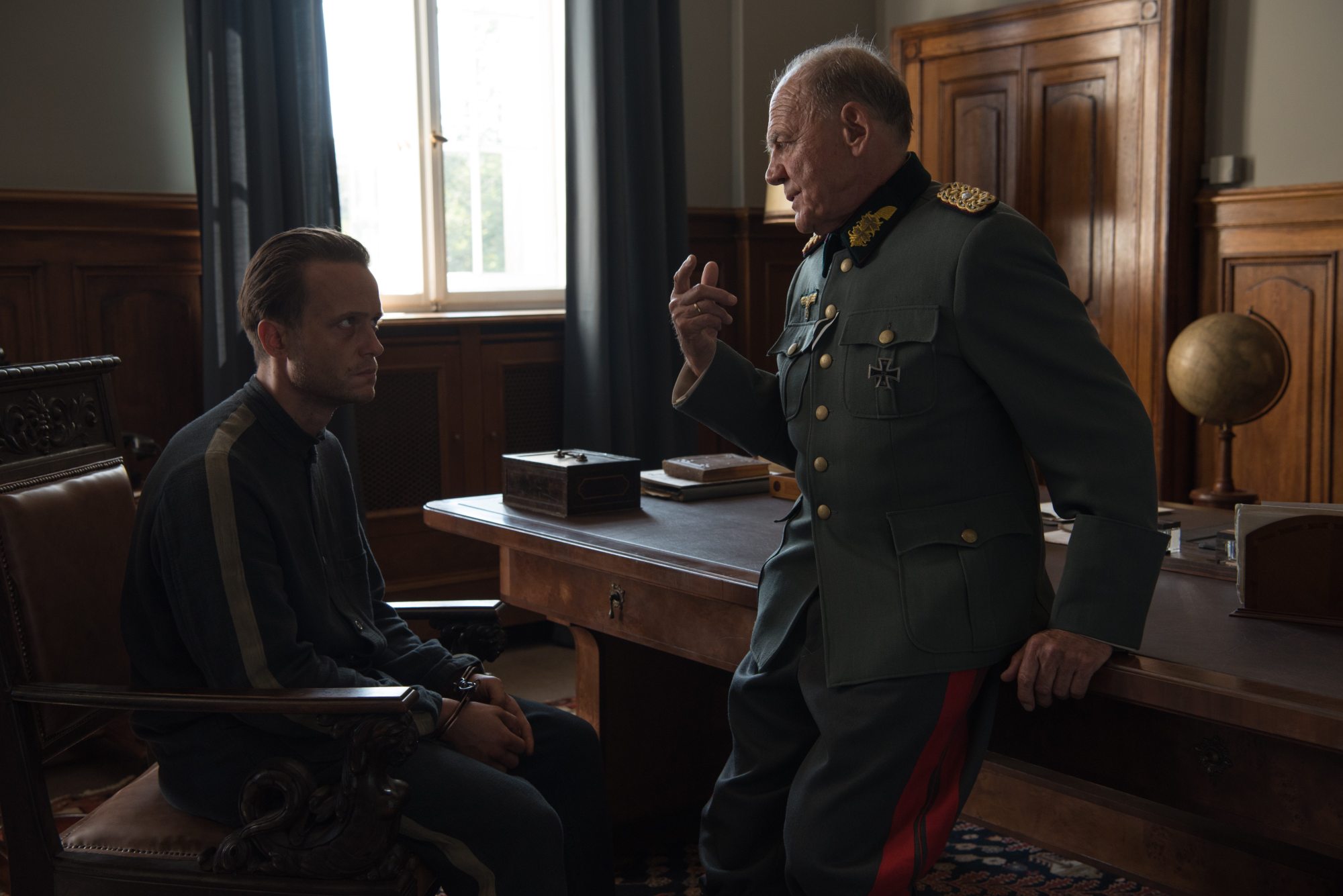
- Festivals
A Hidden Life, Terrence Malick
Terrence Malick’s A Hidden Life begins in a lofty mountain landscape, the majestic Alps of Upper Austria, where the townspeople of tiny alpine hamlet Sankt Radegund go about their daily farming. The humble chores and hard, but godly, labor of the land are undertaken in a timeless fashion, communally and with almost Amish simplicity. None more than by Franz Jägerstätter, who scythes the wild grass fields, milks the cows, stores the hay and tends to the barn with his equally hardworking and utterly devoted, loving wife Franziska, mother of their three young daughters.
Time seems to have stood still in this land above the clouds amid majestic vistas many viewers may be more familiar with from The Sound Of Music. The temporal setting is also the same as that musical picture. It is 1939 and below those swirling clouds ominous events have been set in motion which are about to send dark tidings to the idyllic village. The first of those is the letter which orders Franz to report for basic training at the nearby medieval fortress serving as a military base. When he shows up for basic training he is handed the Nazi uniform – of the army which after the Anschluss has unified Austria and Germany under Hitler’s banners. Franz dons the uniform and even completes boot camp, but something inside of him cannot allow him to abide what he sees unfolding around him.
Jägerstätter is a historical figure and in his tenth film Malick tells the true story of the Austrian farmer’s conscientious objection to the most relentless military machine – and the most ruthless dictatorship – the world had ever seen. Appalled by the hate and mean-spiritedness he sees slowly take hold of the land – including his fellow villagers – Jägerstätter refuses to swear the oath of loyalty to Hitler as is required of every German soldier, an act of defiance for which he is arrested and will eventually pay with his life.
This is not a film about armed or even political resistance as much as it is about spiritual conviction. That inner struggle may seem a difficult subject to adapt to the screen but it is familiar terrain for Malick who unspools the quiet drama with dreamlike, at times almost hallucinatory image-making he has previously employed in films like The New World, The Tree of Life and To The Wonder.
The Catholic church has beatified Jägerstätter as a martyr and it is no coincidence that A Hidden Life is the director’s most overtly religious work. A film which is given meaning and ultimately contemporary relevance by the quote from George Eliot’s “Middlemarch” with which it concludes. It is about the potential of even small acts of conviction to change the world: “(if) things are not so ill with you and me as they might have been, is half owing to the number who lived faithfully a hidden life, and rest in unvisited tombs.”
It is a call to arms for men of good conscience in a world where evil seems to be running amok.

